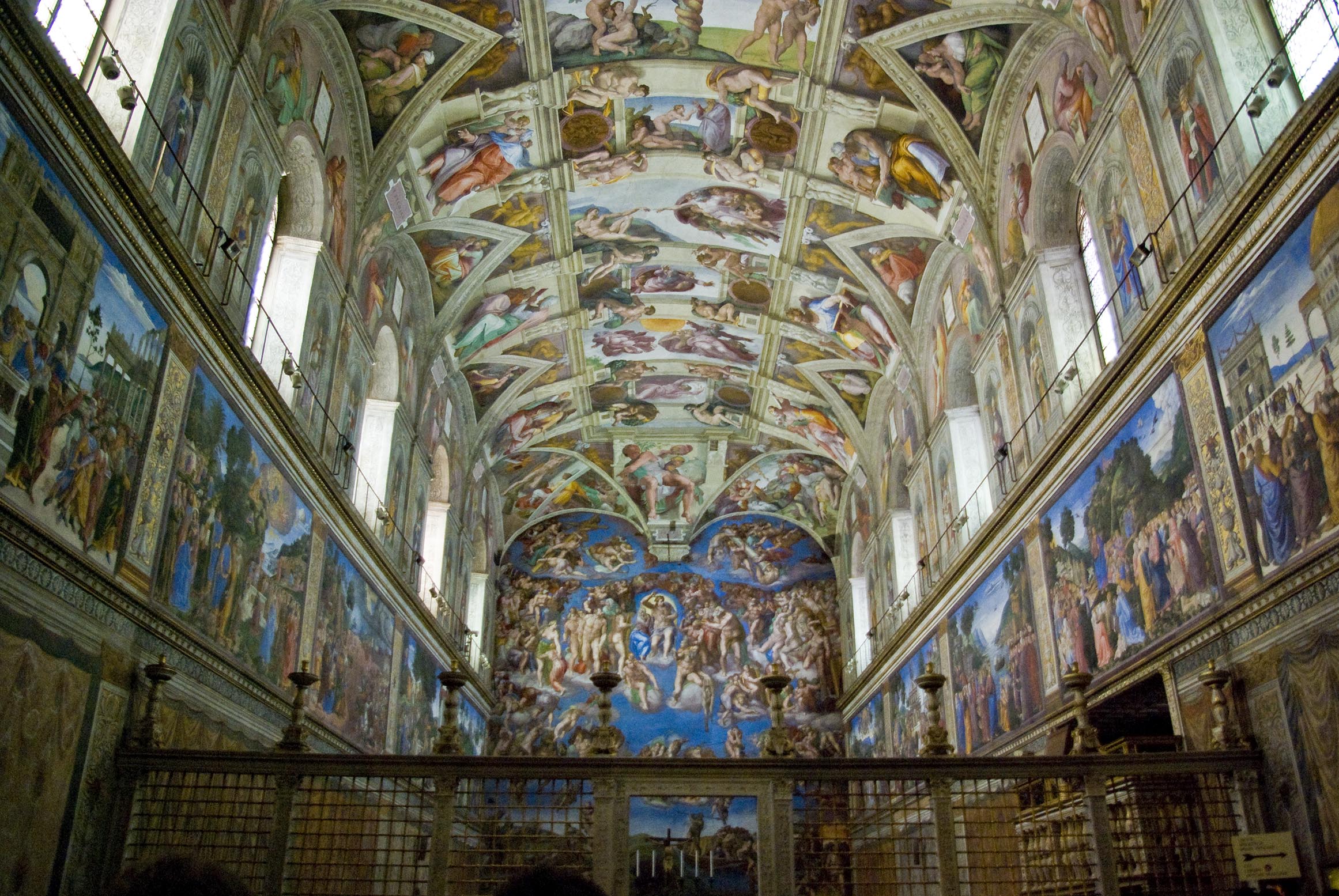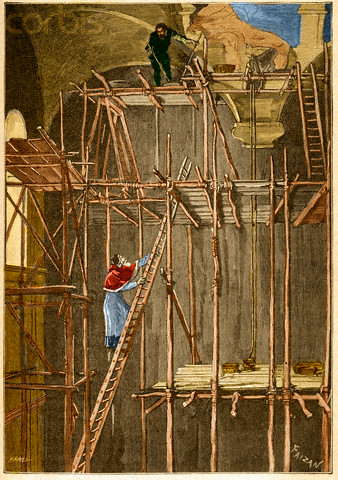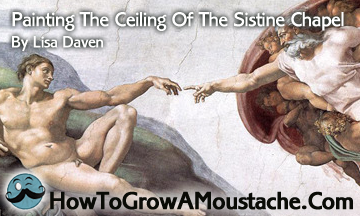The Sistine Chapel is located within the AposolisticPalace in Vatican City and was commissioned by Pope Sixtus IV. It is famous for many reasons but two of the most well known are that 1) the papal elections are held there when a new pope is to be chosen and 2) the ceiling was painted by none other than Michelangelo.

Few people realise but the ceiling was originally painted by Piermatteo Lauro de’ Manfredi da Amelia. He had painted stars on the ceiling of the chapel which remained there until 1508 when Michelangelo was commissioned by the pope to repaint it. Although Michelangelo was engaged with other work at the time involving his main trade as a sculptor, the pope insisted that he carried out the work on the ceiling of the Sistine Chapel. So, in 1508 Michelangelo set to work and completed his painting of the ceiling in 1512.
 “Michelangelo was a sculptor by trade”
“Michelangelo was a sculptor by trade”
As Michelangelo was a sculptor by trade rather than a painter, he had to learn some of the techniques he used along the way. The painting is in a style called ‘fresco’ which is where the paint is applied to the plaster while it is still damp. During his learning curve he actually had to remove some of the plaster he had already painted and start again as he had applied the paint while the plaster was too wet and it started to grow mold!
It may seem strange that somebody who was a sculptor by trade was commissioned to undertake such an important job. Some have even suggested that a fellow artist and architect called Bramante was envious that Michelangelo had received the commission and it was he who convinced the pope to commission Michelangelo to work in unfamiliar medium as he was hoping for him to fail. But he most certainly did not!
The same Bramante who was envious of Michelangelo for getting the commission was also responsible for designing the scaffolding to be used to reach the ceiling to paint it. His scaffolding ideas were flawed however and could not be used. They consisted of a structure suspended from the ceiling by ropes but this could not be used as it would have left holes in the ceiling. Instead, as well as undertaking the task of painting the ceiling, Michelangelo also designed his own scaffolding to use during the painting process including his own more traditional methods for that time such as putlog scaffolding.
Michelangelo’s self portrait showing him painting on his scaffolding.
Michelangelo’s idea that he designed and built himself was to have a platform coming out from brackets high up on the walls. The added benefit of this was that services and mass could still take place below whilst work continued above. Despite the myth that was popularised by the movie with Charlton Heston in when he depicted Michelangelo painting the ceiling laying down, Michelangelo actually painted standing up. In fact this was a big gripe for him as it made his neck ache and gave him pain in his arms. He even wrote a little poem about his toils complete with comic illustrations.
“I’ve grown a goiter by dwelling in this den–
As cats from stagnant streams in Lombardy,
Or in what other land they hap to be–
Which drives the belly close beneath the chin:
My beard turns up to heaven; my nape falls in,
Fixed on my spine: my breast-bone visibly
Grows like a harp: a rich embroidery
Bedews my face from brush-drops thick and thin.
My loins into my paunch like levers grind:
My buttock like a crupper bears my weight;
My feet unguided wander to and fro;
In front my skin grows loose and long; behind,
By bending it becomes more taut and strait;
Crosswise I strain me like a Syrian bow:
Whence false and quaint, I know,
Must be the fruit of squinting brain and eye;
For ill can aim the gun that bends awry.
Come then, Giovanni, try
To succor my dead pictures and my fame;
Since foul I fare and painting is my shame”
“Painting Onto Curved Surfaces”
As well as learning how to work in fresco and devising his own scaffolding to complete the task. Michelangelo also painted in such a way that the figures he was painting on curved surfaces looked correct when viewed from below. I am amazed at the amount of work and learning that he put in to this task and even without counting his other major acheivements (David anyone?!) I don’t think that the word genius would be out of place when talking about Michelangelo.
[vsw id=”jSVe55sBZLg” source=”youtube” width=”625″ height=”544″ autoplay=”no”]
Featured images:
 License: Creative Commons image source
License: Creative Commons image sourceLicense: Creative Commons image source
 Lisa Daven has a passionate interest in art, sculpture and it’s history. She is a believer that to create great future works you sometimes have to look back at great accomplishments.
Lisa Daven has a passionate interest in art, sculpture and it’s history. She is a believer that to create great future works you sometimes have to look back at great accomplishments.






